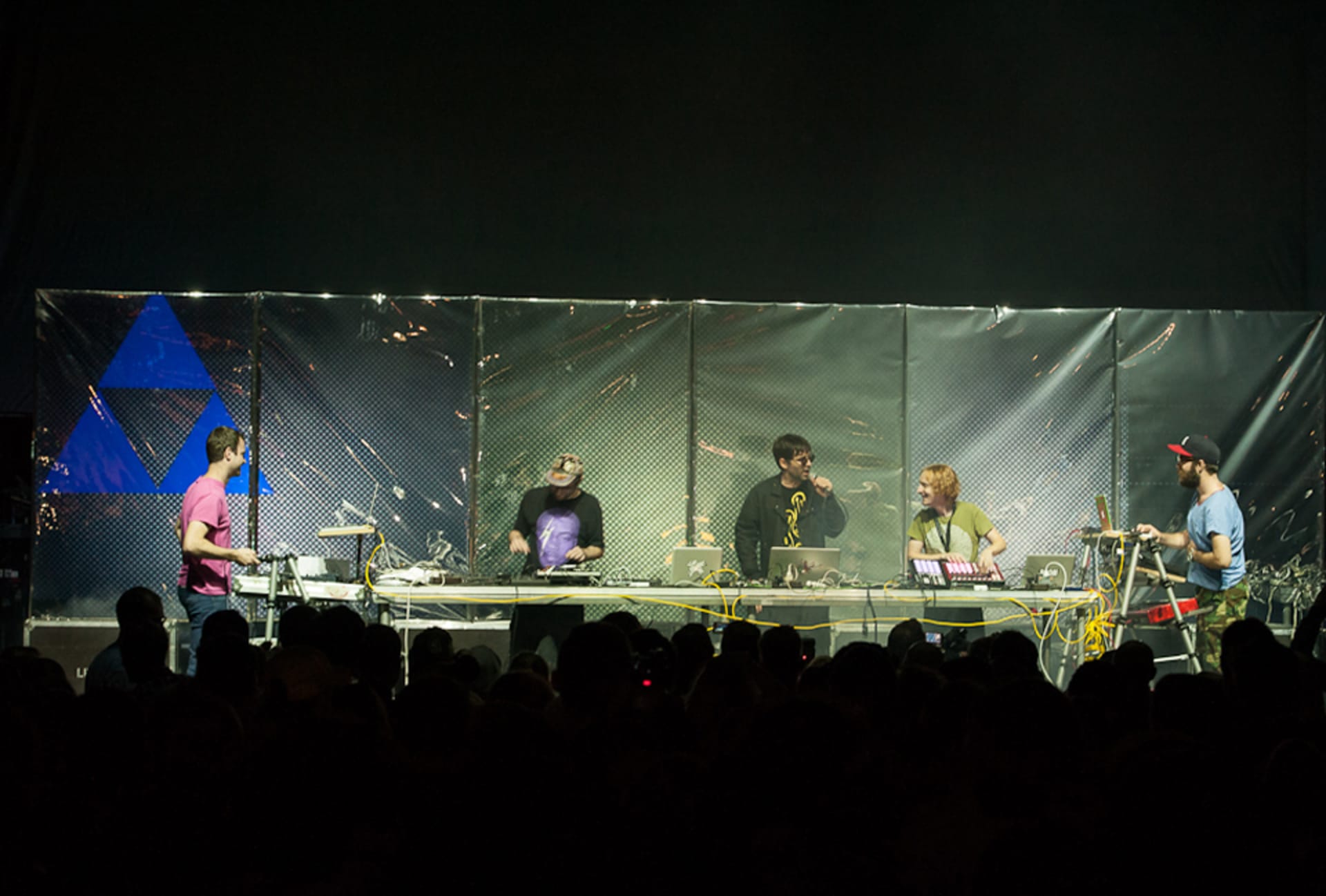
Interview: Mostly Robot
Mostly Robot isn’t just a band or a so-called supergroup. It’s not that Jeremy Ellis, Jamie Lidell, Tim Exile, Mr Jimmy and DJ Shiftee came together by accident. There’s a sense that this is a whole new method of band making. Native Intruments are the ‘curators’ who brought the musicians together, famous of course for their hard- and software: designed and produced for making state-of-the-art music and helmed by former Viva2 anchorman Mate Galic. We teamed up backstage with the Mostly Robot crew to get the background on this most unusual, self proclaimed ‘boyband from the future’.
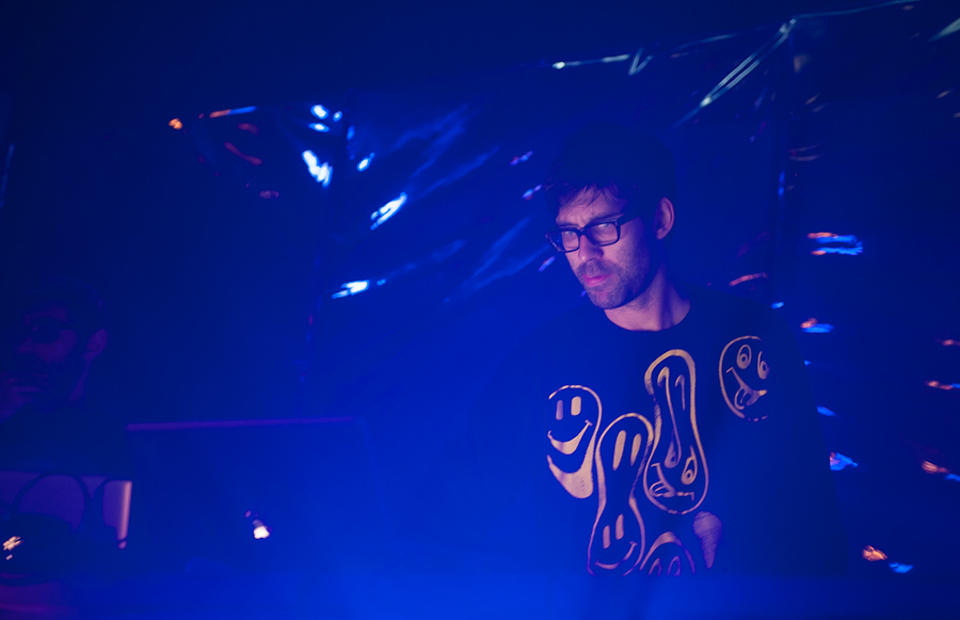
EB: How did the relationship with Native come together?
Mostly Robot: Each one of us was approached by Native in different ways. It grew pretty organically – the original idea that we might do something grew from a Native anniversary party that Jeremy Ellis, Tim Exile and DJ Shiftee played in the LA. At the same time Sónar wanted to work together with Native again on a creative level. It wasn’t really a strategic move to cast a band, but as it developed, we wanted to create something unique.
Does this mean that the days of musicians looking for a label or distribution are over? Normally there’s a line between artists who are creating and companies who want to make money.
We would consider this as a kind of curatorship, of unifying talents which couldn’t be unified otherwise. You always have that in art, this idea of the curator, a person who brings different artists together. So we wouldn’t see that in such a harsh light; it’s the show and the end result which have to catch people emotionally.
Of course, the Guggenheim in Berlin is funded by Deutsche Bank, a body very much into making money while, in 2012, many labels are struggling.
The difference between Deutsche Bank giving money to an artist and Native is that Native makes synthesizers and other musical gear. They make a whole lot of things that we can use and we’re proud to have the Native affiliation because we’re all nerdy in our respective fields and Native are at the cutting edge of technology. It’s not a big corporate thing because we’re with the people pushing what we all want to do. We use the gear because we want to and the fact that we can come together like this is a happy bonus.
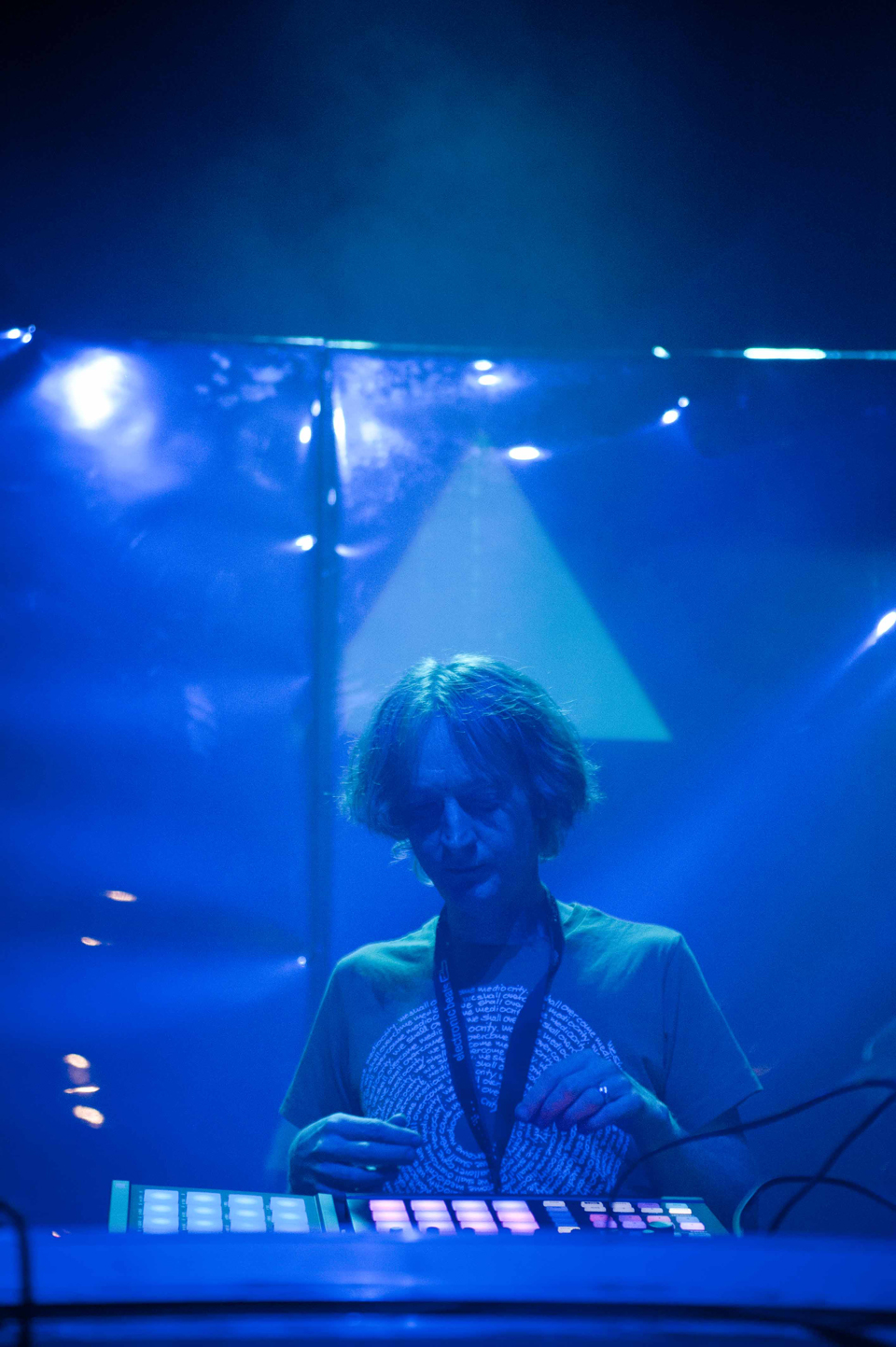
Looking fifty years into the future, how do you think the music industry will develop? Will there still be big labels supporting musicians? Or will it be corporations trying to support musicians, bringing them together to play festivals and releasing albums because all the oldschool labels fell behind because they didn’t understand the internet.
‘Yes’ is the answer to that. In the past, patronage used to be powerful families: the Medici, say, or else think of all the artists who used to create for their nation’s royal families. Now we’re in a capitalist society, the representation of that power has moved to corporations and that’s normal. What’s more, there’s a sense of creating relationships with people: we’re humans, we want to make connections, and, likewise, companies want to make connections. As individuals we want to look the way we want to look and be received in the way we want to be received, and companies want to do that too. Of course, big companies always want a bite of the subculture.
But what is subculture in 2012?
All I mean is that if you show people on the high street names like the bands playing at this festival (Modeselektor, Junior Boys, Nicolas Jaar or Mostly Robot) and if they don’t know who they are then it’s a subculture we’re dealing with. Red Bull is a great example; people don’t know who professional surfers or skateboarders are, it’s a niche thing, but they’re sponsoring 75 different sports. And they’re supporting a lot of freaking cool shit.
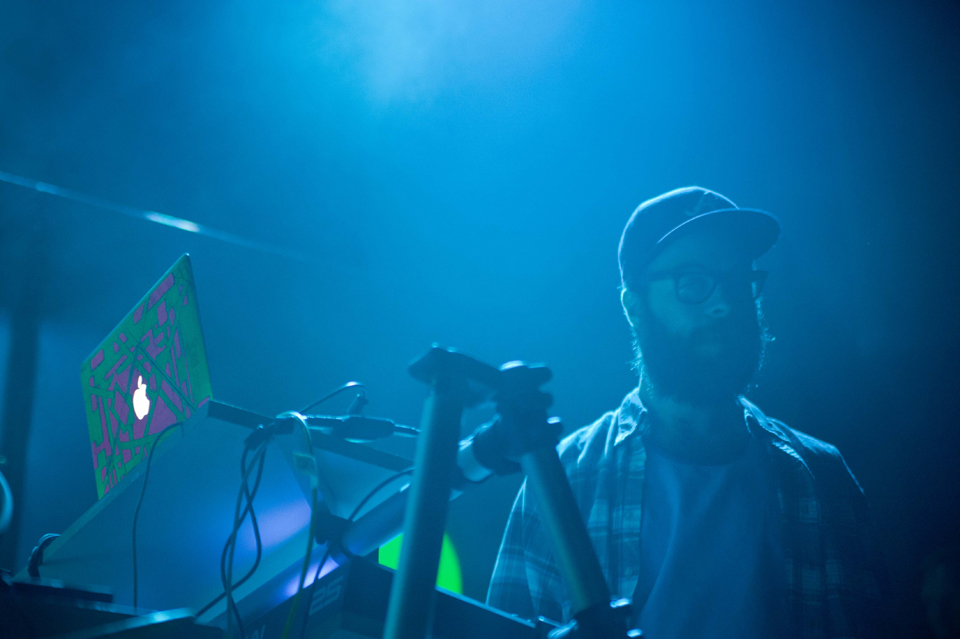
Returning to Mostly Robot, it’s hard to find any tracks on the internet. Is there an album release scheduled and how will that work?
We don’t know is the answer. Ultimately, it’s a pleasure project. There’s a lot of cameras at our gigs, the Native team are putting together videos, however while we’re together it’s about fun. When we all go back to our separate corners and get back on email we’ll talk about serious things. In the meantime we joke a lot, have fun and play the music. There’s no masterplan. We did CDR in Berlin the other night, we played a lot and encouraged people. That’s one thing we’re definitely are: we’re an experiment band.
What can we expect from the live show?
It’s five people onstage and three people running the visuals. Visuals wise, we’re a live band and it was our concept to show that. Every position gets a visual object so you see what you hear. We gave each member a different form or shape that rebuilds his instruments like his pad or his keyboard and these get triggered by the midi notes. We then mix this up with animations that we’ve done in advance because if we just translated the music mathematically it wouldn’t work; music is emotional and a show needs peaks.
How many gigs have you played now?
Sonar, Berlin Festival and this one. CDR wasn’t really a show. We’re jamming, we don’t know what’s going to happen, if it was all click-synced it would be boring for us and the crowd, it needs to have the spirit of the live band. That was the idea, for everyone to jam live and not have a grid where everybody presses play. It’s about getting back to the instruments.
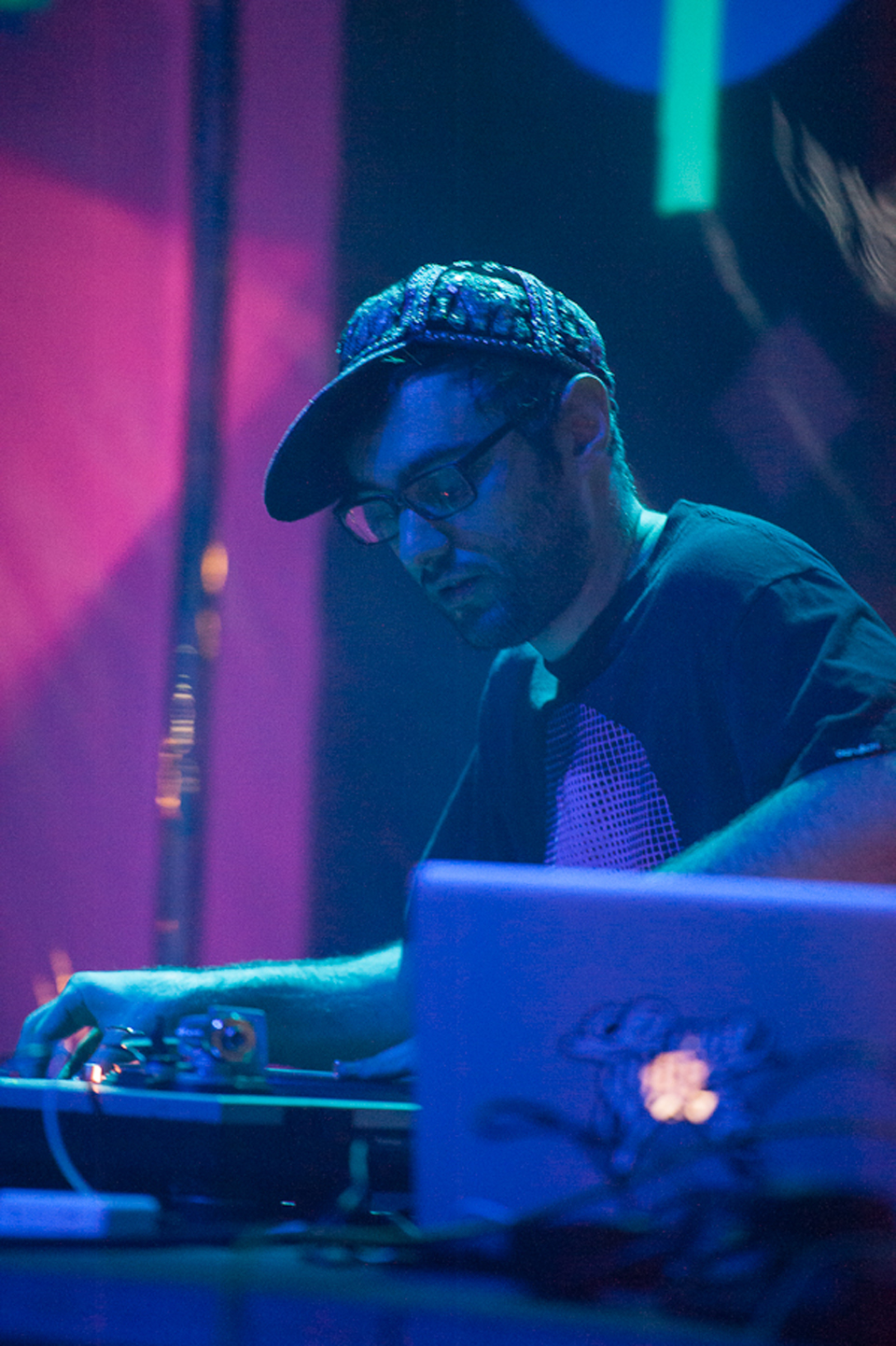
There’s no masterplan, but what about the immediate future? Surely it’s not all spontaneous. You’re playing EB festival, what’s the next step?
As we said, it’s a pleasure project. We will get together when there’s time and talk about it and a plan could emerge, we don’t have a plan not to make a plan. As we do stuff it creates opportunities to do more, one step at a time. We do have some recorded jams … However, that’s the other thing about recording: the one thing about us and recording that’s different is the severe lack of overdubs – that’s the whole point. If we were actually going to go into a studio then we would go into Abbey Road. We would use the pre-amps, plug in and then play it down like it’s 1962. As if we were on a Roy Orbison record. We’re a live band. We exist in real time.
Photos: Attila Masa & Bartalan Soos
Published September 17, 2012.
